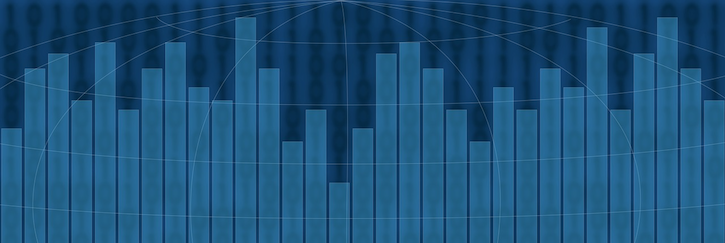- Politics
- Diversity, equity and inclusion
- Financial Decision Making
- Telehealth
- Patient Experience
- Leadership
- Point of Care Tools
- Product Solutions
- Management
- Technology
- Healthcare Transformation
- Data + Technology
- Safer Hospitals
- Business
- Providers in Practice
- Mergers and Acquisitions
- AI & Data Analytics
- Cybersecurity
- Interoperability & EHRs
- Medical Devices
- Pop Health Tech
- Precision Medicine
- Virtual Care
- Health equity
Why Continuous Interpretation of Clinical and Genomics Data Is the Future of Healthcare
EHR adoption has come a long way, but how can healthcare leverage the resultant trove of data?

When the Institute of Medicine (IOM), in 1991, set forth the vision of a “computerized patient record” to digitize all of a patient's medical information, it might not have foreseen the sheer variety and volume of data that a patient’s health record might one day contain. In addition to standard medical records, we will also need to integrate newer sources of data, such as entire patient genomes, data from mobile health (mHealth) apps, and data from gadgets connected to the Internet of Things (IoT), such as smartphone systems that track medication adherence. Genomic profiles and these other data sources will require frequent interpretation of large volumes of data to extract their clinical value.
Now that the cost for sequencing an entire genome has fallen under $1000, with companies such as Illumina aiming for a $100 test, it seems likely that electronic health records (EHRs) will soon need to interpret whole or partial genomes. EHRs and clinical decision support (CDS) systems will, therefore, need to be smart about analyzing just the relevant genetic variant information when there is a change in the patient’s medical history or if new genetic guidance is issued. Clinicians will access genomic data for different reasons: to check drug safety and efficacy (pharmacogenomics), for disease risk prediction, and to evaluate possible response to chemotherapy or other procedures.
How Often Should Healthcare Analytics Run?
The case for continuous interpretation of data streams can be made more easily in the inpatient setting where vital signs such as heart rate and oxygen levels can be monitored continuously to identify patients at risk for developing sepsis. In the outpatient setting, one could argue that on-demand CDS when the patient is in front of the provider may not be enough to optimize the value of all patient data. While analytics may not need to run 24/7 for non-continuous data streams, it would seem helpful to run analytics anytime a change is detected in the medical record, such as a new prescription, new diagnosis, or emergency room or hospital discharge event that might influence the patient’s care.
It would also be helpful to run analytics whenever new genomic-related guidance or clinical guidelines are updated. For example, if new guidance is issued that patients with a certain variant do not do as well on a particular antidepressant, it would be good to identify those patients and get them on a more effective medication now rather than waiting weeks or months until their next appointment. Mayo Clinic used deep learning and genomic data to determine “with 75-85% accuracy whether a common antidepressant drug would work for each individual patient in the study.” Given the pace of discoveries determining the clinical relevance of genomic variants and the development of new best practices from machine learning, CDS systems will need to integrate this new guidance and interpret patient data frequently to identify patients who might benefit.
The increasing adoption of mHealth apps, such as heart rate and continuous glucose monitors, will also add more data to a patient's record. Beyond the simple detection of values out of range, such as a fast heart rate or low blood sugar, a good CDS system would evaluate those data changes in the context of the whole medical record. Is the drop in blood sugar due to a new insulin dose that was started earlier in the week? Is the fast heart rate explained by a known condition, or should the patient be seen immediately?
We have made great progress toward creating EHRs for everyone and are now working on integrating a variety of new data sources. One of the challenges ahead is figuring out how often to interpret this vast quantity of data. CDS systems that continuously analyze both changes in the medical history as well as changes in clinical and genomic best practices will be needed to extract the best clinical value in a timely way.
Matt Yuill, MD, is a physician and vice president, Quality and Risk Analytics at Interpreta. His company is a provider of a real-time analytics engine that continuously updates, interprets, and synchronizes clinical and genomics data, creating a personalized roadmap and enabling the orchestration of timely care. It is online at www.interpreta.com. For correspondence, please email [email protected].
Related
Actionable Analytics: A Marathon or a Sprint?
